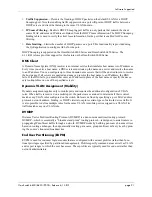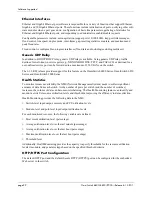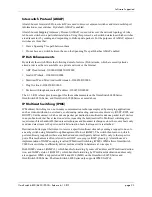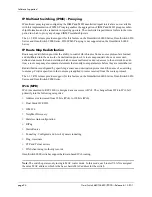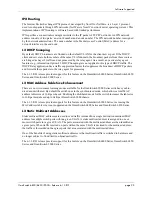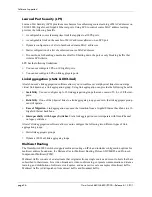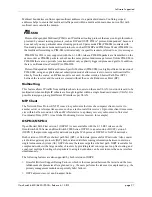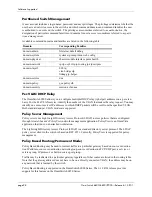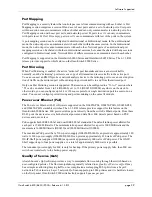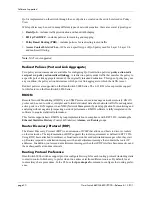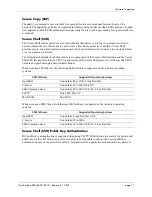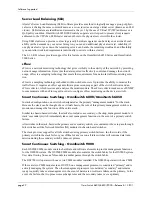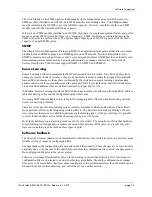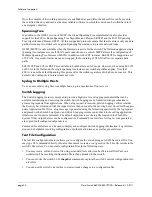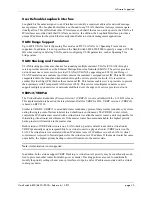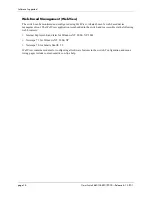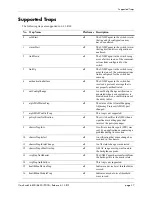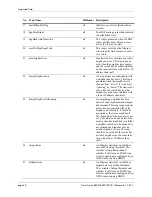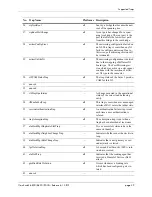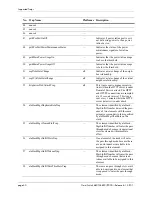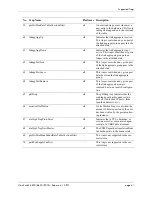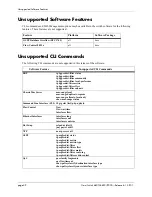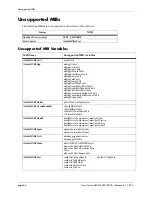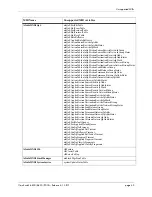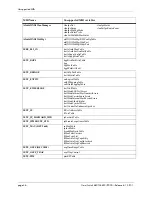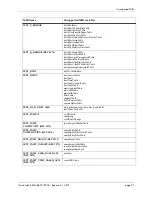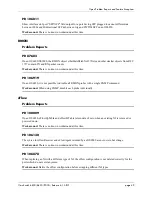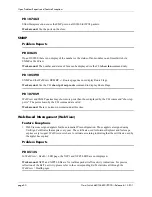
Software Supported
OmniSwitch 6800/6850/9000—Release 6.1.3.R01
page 35
User Definable Loopback Interface
Loopback0 is the name assigned to an IP interface to identify a consistent address for network manage-
ment purposes. The Loopback0 interface is not bound to any VLAN, therefore it always remains opera-
tionally active. This differs from other IP interfaces, such that if there are no active ports in the VLAN, all
IP interfaces associated with that VLAN are not active. In addition, the Loopback0 interface provides a
unique IP address for the switch that is easily identifiable to network management applications.
VLAN Range Support
Up to 4094 VLANs for Flat Spanning Tree mode and 252 VLANs for 1x1 Spanning Tree mode are
supported. In addition, it is now possible on the OmniSwitch 6800/6850/9000 to specify a range of VLAN
IDs when creating or deleting VLANs and/or configuring VLAN parameters, such as Spanning Tree
bridge values.
VLAN Stacking and Translation
VLAN Stacking provides a mechanism for tunneling multiple customer VLANs (CVLAN) through a
service provider network over the Ethernet Metropolitan Area Network (EMAN). The service provider
network uses one or more service provider VLANs (SVLAN) by appending an 802.1Q double tag or
VLAN Translation on a customer port that contains the customer’s assigned tunnel ID. This traffic is then
encapsulated into the tunnel and transmitted through the service provider network. It is received on
another Provider Edge (PE) that has the same tunnel ID. This feature enables service providers to provide
their customers with Transparent LAN Services (TLS). This service is multipoint in nature so as to
support multiple customer sites or networks distributed over the edges of a service provider network.
VRRPv2/VRRPv3
The Virtual Router Redundancy Protocol version 3 (VRRPv3) is now available with the 6.1.3.R01 release.
This implementation is based on the latest Internet-Draft for VRRP for IPv6. VRRP version 2 (VRRPv2)
is based on RFC 2338.
Similar to VRRPv2, VRRPv3 is a standard router redundancy protocol that provides redundancy by elimi-
nating the single point of failure inherent in a default route environment. The VRRPv3 router, which
controls the IPv6 address associated with a virtual router is called the master router, and is responsible for
forwarding virtual router advertisements. If the master router becomes unavailable, the highest priority
backup router will transition to the master state.
Both versions of VRRP allow routers on a LAN to back up a static default route with a virtual router.
VRRP dynamically assigns responsibility for a virtual router to a physical router (VRRP router) on the
LAN. The virtual router is associated with an IP address (or set of IP addresses) on the LAN. A virtual
router master is elected to forward packets for the virtual router’s IP address. If the master router becomes
unavailable, the highest priority backup router will transition to the master state.
Note.
Authentication is not supported.
In addition, both versions support VRRP Tracking. A virtual router’s priority may be conditionally modi-
fied to prevent another router from taking over as master. Tracking policies are used to conditionally
modify the priority setting whenever an ip interface, slot/port, and/or IP address associated with a virtual
router goes down.

